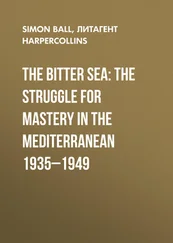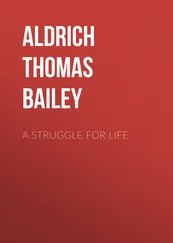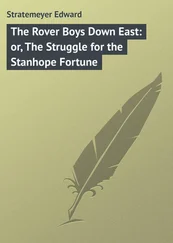Чарльз Дарвин - The Origin of Species by Means of Natural Selection Or, the Preservation of Favoured Races in the Struggle for Life
Здесь есть возможность читать онлайн «Чарльз Дарвин - The Origin of Species by Means of Natural Selection Or, the Preservation of Favoured Races in the Struggle for Life» весь текст электронной книги совершенно бесплатно (целиком полную версию без сокращений). В некоторых случаях можно слушать аудио, скачать через торрент в формате fb2 и присутствует краткое содержание. Год выпуска: 1999, Жанр: Биология, на английском языке. Описание произведения, (предисловие) а так же отзывы посетителей доступны на портале библиотеки ЛибКат.
- Название:The Origin of Species by Means of Natural Selection Or, the Preservation of Favoured Races in the Struggle for Life
- Автор:
- Жанр:
- Год:1999
- ISBN:нет данных
- Рейтинг книги:3 / 5. Голосов: 1
-
Избранное:Добавить в избранное
- Отзывы:
-
Ваша оценка:
- 60
- 1
- 2
- 3
- 4
- 5
The Origin of Species by Means of Natural Selection Or, the Preservation of Favoured Races in the Struggle for Life: краткое содержание, описание и аннотация
Предлагаем к чтению аннотацию, описание, краткое содержание или предисловие (зависит от того, что написал сам автор книги «The Origin of Species by Means of Natural Selection Or, the Preservation of Favoured Races in the Struggle for Life»). Если вы не нашли необходимую информацию о книге — напишите в комментариях, мы постараемся отыскать её.
The Origin of Species by Means of Natural Selection Or, the Preservation of Favoured Races in the Struggle for Life — читать онлайн бесплатно полную книгу (весь текст) целиком
Ниже представлен текст книги, разбитый по страницам. Система сохранения места последней прочитанной страницы, позволяет с удобством читать онлайн бесплатно книгу «The Origin of Species by Means of Natural Selection Or, the Preservation of Favoured Races in the Struggle for Life», без необходимости каждый раз заново искать на чём Вы остановились. Поставьте закладку, и сможете в любой момент перейти на страницу, на которой закончили чтение.
Интервал:
Закладка:
An organ, serving for two purposes, may become rudimentary or utterly aborted for one, even the more important purpose, and remain perfectly efficient for the other. Thus, in plants, the office of the pistil is to allow the pollen-tubes to reach the ovules within the ovarium. The pistil consists of a stigma supported on the style; but in some Compositae, the male florets, which of course cannot be fecundated, have a rudimentary pistil, for it is not crowned with a stigma; but the style remains well developed and is clothed in the usual manner with hairs, which serve to brush the pollen out of the surrounding and conjoined anthers. Again, an organ may become rudimentary for its proper purpose, and be used for a distinct one: in certain fishes the swim-bladder seems to be rudimentary for its proper function of giving buoyancy, but has become converted into a nascent breathing organ or lung. Many similar instances could be given.
Useful organs, however little they may be developed, unless we have reason to suppose that they were formerly more highly developed, ought not to be considered as rudimentary. They may be in a nascent condition, and in progress towards further development. Rudimentary organs, on the other hand, are either quite useless, such as teeth which never cut through the gums, or almost useless, such as the wings of an ostrich, which serve merely as sails. As organs in this condition would formerly, when still less developed, have been of even less use than at present, they cannot formerly have been produced through variation and natural selection, which acts solely by the preservation of useful modifications. They have been partially retained by the power of inheritance, and relate to a former state of things. It is, however, often difficult to distinguish between rudimentary and nascent organs; for we can judge only by analogy whether a part is capable of further development, in which case alone it deserves to be called nascent. Organs in this condition will always be somewhat rare; for beings thus provided will commonly have been supplanted by their successors with the same organ in a more perfect state, and consequently will have become long ago extinct. The wing of the penguin is of high service, acting as a fin; it may, therefore, represent the nascent state of the wing: not that I believe this to be the case; it is more probably a reduced organ, modified for a new function: the wing of the Apteryx, on the other hand, is quite useless, and is truly rudimentary. Owen considers the simple filamentary limbs of the Lepidosiren as the "beginnings of organs which attain full functional development in higher vertebrates;" but, according to the view lately advocated by Dr. Gunther, they are probably remnants, consisting of the persistent axis of a fin, with the lateral rays or branches aborted. The mammary glands of the Ornithorhynchus may be considered, in comparison with the udders of a cow, as in a nascent condition. The ovigerous frena of certain cirripedes, which have ceased to give attachment to the ova and are feebly developed, are nascent branchiae.
Rudimentary organs in the individuals of the same species are very liable to vary in the degree of their development and in other respects. In closely allied species, also, the extent to which the same organ has been reduced occasionally differs much. This latter fact is well exemplified in the state of the wings of female moths belonging to the same family. Rudimentary organs may be utterly aborted; and this implies, that in certain animals or plants, parts are entirely absent which analogy would lead us to expect to find in them, and which are occasionally found in monstrous individuals. Thus in most of the Scrophulariaceae the fifth stamen is utterly aborted; yet we may conclude that a fifth stamen once existed, for a rudiment of it is found in many species of the family, and this rudiment occasionally becomes perfectly developed, as may sometimes be seen in the common snap-dragon. In tracing the homologies of any part in different members of the same class, nothing is more common, or, in order fully to understand the relations of the parts, more useful than the discovery of rudiments. This is well shown in the drawings given by Owen of the leg bones of the horse, ox, and rhinoceros.
It is an important fact that rudimentary organs, such as teeth in the upper jaws of whales and ruminants, can often be detected in the embryo, but afterwards wholly disappear. It is also, I believe, a universal rule, that a rudimentary part is of greater size in the embryo relatively to the adjoining parts, than in the adult; so that the organ at this early age is less rudimentary, or even cannot be said to be in any degree rudimentary. Hence rudimentary organs in the adult are often said to have retained their embryonic condition.
I have now given the leading facts with respect to rudimentary organs. In reflecting on them, every one must be struck with astonishment; for the same reasoning power which tells us that most parts and organs are exquisitely adapted for certain purposes, tells us with equal plainness that these rudimentary or atrophied organs are imperfect and useless. In works on natural history, rudimentary organs are generally said to have been created "for the sake of symmetry," or in order "to complete the scheme of nature." But this is not an explanation, merely a restatement of the fact. Nor is it consistent with itself: thus the boa-constrictor has rudiments of hind limbs and of a pelvis, and if it be said that these bones have been retained "to complete the scheme of nature," why, as Professor Weismann asks, have they not been retained by other snakes, which do not possess even a vestige of these same bones? What would be thought of an astronomer who maintained that the satellites revolve in elliptic courses round their planets "for the sake of symmetry," because the planets thus revolve round the sun? An eminent physiologist accounts for the presence of rudimentary organs, by supposing that they serve to excrete matter in excess, or matter injurious to the system; but can we suppose that the minute papilla, which often represents the pistil in male flowers, and which is formed of mere cellular tissue, can thus act? Can we suppose that rudimentary teeth, which are subsequently absorbed, are beneficial to the rapidly growing embryonic calf by removing matter so precious as phosphate of lime? When a man's fingers have been amputated, imperfect nails have been known to appear on the stumps, and I could as soon believe that these vestiges of nails are developed in order to excrete horny matter, as that the rudimentary nails on the fin of the manatee have been developed for this same purpose.
On the view of descent with modification, the origin of rudimentary organs is comparatively simple; and we can understand to a large extent the laws governing their imperfect development. We have plenty of cases of rudimentary organs in our domestic productions, as the stump of a tail in tailless breeds, the vestige of an ear in earless breeds of sheep—the reappearance of minute dangling horns in hornless breeds of cattle, more especially, according to Youatt, in young animals—and the state of the whole flower in the cauliflower. We often see rudiments of various parts in monsters; but I doubt whether any of these cases throw light on the origin of rudimentary organs in a state of nature, further than by showing that rudiments can be produced; for the balance of evidence clearly indicates that species under nature do not undergo great and abrupt changes. But we learn from the study of our domestic productions that the disuse of parts leads to their reduced size; and that the result is inherited.
It appears probable that disuse has been the main agent in rendering organs rudimentary. It would at first lead by slow steps to the more and more complete reduction of a part, until at last it became rudimentary—as in the case of the eyes of animals inhabiting dark caverns, and of the wings of birds inhabiting oceanic islands, which have seldom been forced by beasts of prey to take flight, and have ultimately lost the power of flying. Again, an organ, useful under certain conditions, might become injurious under others, as with the wings of beetles living on small and exposed islands; and in this case natural selection will have aided in reducing the organ, until it was rendered harmless and rudimentary.
Читать дальшеИнтервал:
Закладка:
Похожие книги на «The Origin of Species by Means of Natural Selection Or, the Preservation of Favoured Races in the Struggle for Life»
Представляем Вашему вниманию похожие книги на «The Origin of Species by Means of Natural Selection Or, the Preservation of Favoured Races in the Struggle for Life» списком для выбора. Мы отобрали схожую по названию и смыслу литературу в надежде предоставить читателям больше вариантов отыскать новые, интересные, ещё непрочитанные произведения.
Обсуждение, отзывы о книге «The Origin of Species by Means of Natural Selection Or, the Preservation of Favoured Races in the Struggle for Life» и просто собственные мнения читателей. Оставьте ваши комментарии, напишите, что Вы думаете о произведении, его смысле или главных героях. Укажите что конкретно понравилось, а что нет, и почему Вы так считаете.












